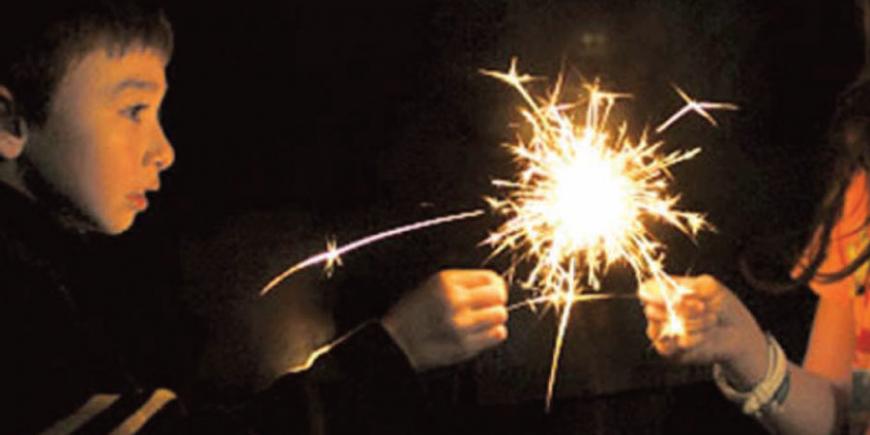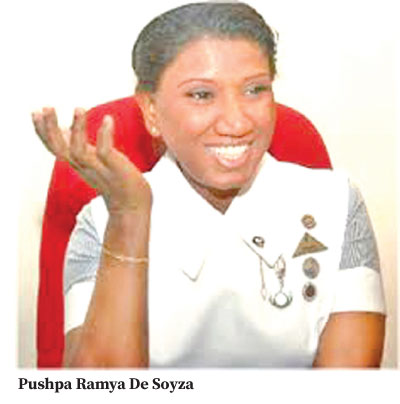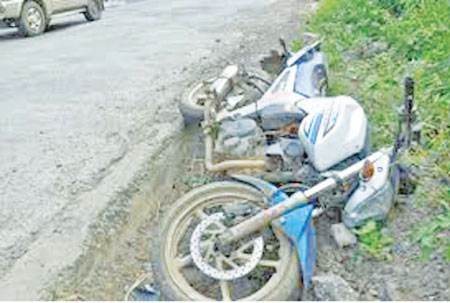
With just a few days to go for Christmas the signs of the coming festive season are already visible with shop windows illumined by colourful lights and showrooms filled with trendy dresses and Christmas gadgets. Pedestrians and window shoppers who crowd the narrow pavements, often find themselves in the path of speeding maniacs who give little thought to the risks they pose to the thousands of pre Christmas shoppers using the roads .
“The festive season is the time when road accidents surge. We urge the public to be extremely cautious when travelling on the roads by adhering to the existing rules as far as possible”, Training Coordinator Accident & Orthopoedic Service & Triag Team, Pushpa Ramya De Soyza told the Sunday Observer.The main culprits are motor cyclists, three wheelers, drunk drivers and speed maniacs.
Excerpts of the interview
Q. According to global figures, eight people die on the roads everyday, while those seriously injured are around thirty on a daily basis. Those who incur minor injuries are an estimated one hundred. How does Sri Lanka stand in comparison?Do these global figures match those in Sri Lanka?
A. Sadly yes. Our figures are very similar. When you consider the worldwide percentage difference in all types of vehicular accidents, the number of people who die from road accidents compared to train accidents is 1: 3 due to the surge in vehicles on roads. Over 285 persons died in accidents and 349 push cyclists, and 387 pedestrians also succumbed to road accidents worldwide. However, the number of motor bike riders far exceeded the others, totalling 1,167.
Q. What are the consequences of these tragic accidents?
A. Globally, for 80 % of children who have either witnessed the accidents or lost their parents, it has caused mental problems, while 40 % have become orphaned.
Q. Among the victims, who are those most vulnerable to the adverse impacts of road accidents?
A. Bike riders. Global figures show that fifty percent of them died on the very first day of their experience of riding their bikes.
Q. What are the health impacts?
A. It can cause terrible injury and trauma. This can be minimised by the use of seat belts worn properly, and paying attention to traffic regulations.
Q. How can wearing a seat belt help?
A. If you are wearing a seat belt in a frontal impact the majority of the force of the impact will be transferred to the meeting between your body and your seat belt. However, while the seat belt is designed to save your life in a car accident, it may injure you to do so. In a typical frontal impact the seat belt absorbs a considerable amount of energy as your body collides with it. The harder the impact the more force the seat belt exerts on your upper torso. This leads to a couple of common injuries, including:
l broken or fractured collarbones where the seat belt crosses over the shoulder
l broken ribs, particularly, in higher speed impacts
l in very powerful impacts all the ribs can break, forcing the ribcage onto the lungs
l if the chest cavity is punctured by a broken rib, then the lungs will stop inflating as the chest expands, a condition commonly referred to as a collapsed lung
l if a seat belt is worn incorrectly, and the majority of the accident force is transferred via the seat belt into areas of the abdomen not protected by the ribcage, massive internal injuries can take place.
Q. Airbags ?
A. An airbag is deployed with considerable force at the point of impact, and is designed to push your body and head backward, while also immediately beginning a process of gradual deflation to absorb as much of the force of the impact with your body as possible.
However, an airbag can cause injuries of its own. Typical injuries from airbags include:
l temporary or permanent blindness if the airbag impacts the eye area
l facial injuries, including abrasions, burns and broken facial bones
l injuries to the chest, typically broken ribs
l neck and spinal injuries caused by the airbag snapping the head backwards.
Q. Gender-wise tell us whether females or males are more vulnerable?
A. Global statistics show that gender wise over 80 percent of males died on the roads due to careless driving, speeding and showing off. This affects their families, society and the economy.
Q. From your experience what do you see are the most significant contributory factors?
A. Over 85% of these accidents are due to human factors . To give an illustration, if you walk along the road you will see how three wheelers try to overtake other vehicles without any warning, cutting into their paths and forcing them onto the path of oncoming traffic, thereby causing a traffic jam or an accident. Then, there are young motor cyclists trying to show off by riding recklessly, and many of them don’t have proper licences or carry more than the two passengers they are allowed, and have faulty brakes as well.
Q. What about pedestrians? Are they also not guilty of breaking road rules that make them vulnerable?
A. “Yes pedestrians are also to blame as many don’t bother to use the pedestrian and zebra crossings when crossing to the other side of the road. Others don’t stand at the bus stops but jump into buses while the buses are moving.
Q. What about pedestrians, especially, young people who continue to use their mobile phones while crossing the road, not heeding the traffic.? Traffic Police sources who we spoke to have confirmed this, saying , “We have conducted awareness programs and classes for offenders but they return to their old habits once they have finished with us. Your comments?
A. Collectively, it is these human factors that have caused a surge in road accidents in recent years.
Q. So what has the Accident Service done to raise awareness about this dangerous trend?
A. We have held several awareness raising programs for the public, starting at school level. Our programs in schools are aimed at teaching children how to use roads safely.
Q. Are parents allowed to attend these programs?
A. Yes parents are invited to attend these programs as well and we have instilled in them the importance of accompanying their children while crossing a busy road.
Q. However, in spite of these programs and precautions to minimise accidents, especially, among schoolchildren, there are daily reports in the media of children becoming victims of road accidents, some injured so badly that the outcomes have been fatal. Why?
A. This happens when an active youngster suddenly lets go of his parents’ hands and runs off on his own to get into his vehicle parked outside the school, or to greet a friend.
This can be dangerous as an oncoming vehicle can knock them over if they jump into their path suddenly.
Q. Apart from road accidents, the festive season also carries the risk of burns from lighting fireworks . Your comments? Do you have some guidelines to share with the public regarding this danger? What are the Dos and the Don’ts ?
Do…..
l Light firecrackers outdoors, as they are potential fire hazards
l Light one firecracker at a time
Don’t
l Do not hold a firecracker while lighting it
l Do not pick up failed firecrackers, they can still explode
l When lighting fireworks that fall like a fountain, do not bend directly over the pyrotechnic devices
l Do not throw firecrackers at passing people or vehicles
l Do not allow children to hold firecrackers, especially, the watusi (dancing fireworks) and the piccolo which is said to be the leading cause of fire related injuries in the Philippines. Though they are banned products here some traders have managed to illegally import them and distribute them, according to Police.
Here are some things you can do to avoid or minimise injuries from fireworks.
Standard for Fire cracker
Individual items must bear cautionary labelling giving a signal word, statement of hazard(s), and instructions for proper use.
All cautionary labelling must be located prominently, in all three languages in conspicuous and legible type, in contrast to typography, layout or colour with any other printed or graphic matter on the label.
The name and place of business of the manufacturer, packer, distributor, or seller must appear on the label of each product. Look for the warning labels and instructions on how to use them. Never carry fireworks in a pocket or shoot them off in metal or glass containers. Never point or throw fireworks at another person.
Always have an adult to supervise fireworks activities. Never allow young children to play with or ignite fireworks including sparklers. Only persons over the age of 12 should be allowed to handle sparklers of any type.
Be careful when lighting the fuse. Never place any part of your body directly over a fireworks device when lighting the fuse. Light fireworks one at a time, then quickly back away to a safe distance. Keep a bucket of water or a garden hose handy in case of fire or other mishap. After the fireworks complete their burning, douse the spent device with plenty of water before discarding it to prevent a trash fire.
. Use common sense. Spectators should keep a safe distance from the shooter and the shooter should wear safety glasses.
. Alcohol and fireworks do not mix. Have a “designated shooter.”
